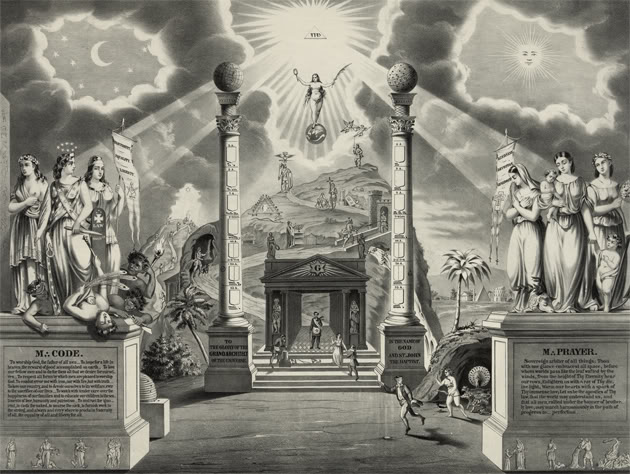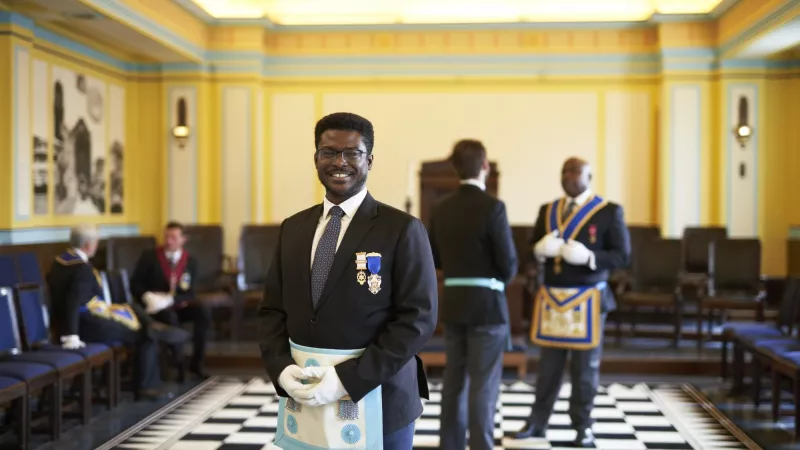Practical Advice on How to Successfully Join Freemason in Your Region
Practical Advice on How to Successfully Join Freemason in Your Region
Blog Article
Checking Out the Mysteries of the copyright: What You Need to Know
The copyright, a term typically shrouded in intrigue and controversy, stands for a complex tapestry of historic truth and modern-day myth. Developed in the late 18th century, this secret society was at first rooted in the Enlightenment's perfects however has actually given that ended up being identified with conspiracy concepts regarding elite control. As we navigate the origins, crucial numbers, and the plain contrast in between myth and truth, one must think about just how these narratives affect modern perceptions of power and secrecy. What could be revealed with a more detailed examination of these aspects might test long-held presumptions about the shadows that remain in our culture.
Beginnings of the copyright
The beginnings of the copyright are soaked in a mix of historic intrigue and ideological eagerness. Developed in 1776 in Ingolstadt, Bavaria, by Adam Weishaupt, the team was at first developed as a secret society focused on promoting Knowledge suitables such as factor, secularism, and the splitting up of church and state. join freemason. Weishaupt, a teacher of canon legislation, looked for to test the prevailing authority of the church and state, which he checked out as oppressive organizations stifling intellectual and personal freedom
The copyright sought to hire significant participants from numerous social markets, consisting of politics, academia, and the arts, to foster a network committed to these Knowledge concepts. The society operated under a veil of privacy, using coded language and routines to safeguard its members from persecution, specifically offered the repressive climate of the time. The copyright faced substantial resistance from both governmental authorities and religious organizations, which viewed the team as a danger to their power.
Key Numbers and Participants
That were the pivotal numbers that shaped the copyright's very early impact and direction? The Bavarian copyright, started in 1776 by Adam Weishaupt, emerged as a feedback to the oppressive social structures of the time.
One more substantial figure was Johann Gottlieb Fichte, a noticeable philosopher whose concepts on nationalism and education and learning resonated with the copyright's objectives. Although Fichte was not a formal member, his thoughtful bases influenced the group's ideological background. Additionally, figures like the author and thinker Johann Wolfgang von Goethe were related to the wider intellectual activities of the time, although their direct involvement with the copyright continues to be questioned.
These essential figures added to the copyright's very early instructions, pushing the boundaries of political and social thought, while their cumulative initiatives intended to test established norms and promote an environment of dynamic change in Europe. (join freemason)
Myths vs. Reality
Numerous misconceptions border the copyright, commonly blending reality with fiction in such a way that covers its real nature. This secret society, originally established in 1776 in Bavaria, aimed to promote Knowledge perfects and fight spiritual and political injustice. The notion that the copyright continues to apply considerable impact over globe events is a misconception. While the group did exist, it was disbanded in the late 18th century and has actually not run as a natural entity ever since.
An additional widespread myth is that the copyright makes up a network of elite why not find out more individuals adjusting international events. In truth, lots of conspiracy theory theories exaggerate the team's value, connecting unproven motives to social fads and events. This has brought about an oversimplified sight of complicated issues.
Furthermore, the portrayal of the copyright in pop culture typically further misshapes its tradition. Films and literary works have a tendency to sensationalize the organization's function, creating a story that splits from historical truths. Understanding the distinction between the misconceptions and the truth of the copyright is crucial for critical the genuine influence of this historical team and acknowledging the more comprehensive ramifications of conspiracy theory theories in modern society.

Modern Analyses
Contemporary interpretations of the copyright often mirror more comprehensive societal anxieties and a fascination with privacy and power. This modern-day lens frequently links the copyright with conspiracy concepts that suggest a covert elite orchestrates globe events, controling governments and economic situations for their own gain. Such stories tap right into an ingrained mistrust of authority, specifically in times of crisis or social turmoil.
In pop culture, the copyright is often illustrated as an omnipotent organization shrouded in enigma, resulting in a plethora of imaginary representations in literature, movie, and songs. This portrayal serves not just to entertain however additionally to prompt thought regarding the nature of power and control in modern society. Social network has actually further enhanced these analyses, permitting for rapid dissemination of conspiracy theory concepts and creating communities that share and broaden upon these concepts.
In addition, some modern interpretations frame the copyright as a metaphor for the intricacies of globalization and the interconnectedness of significant people and companies. This perspective encourages a vital assessment of just how power characteristics run in today's globe, highlighting the balance between transparency and secrecy in governance and corporate practices.
Social Effect and Tradition
Influenced by centuries of intrigue, the cultural influence and heritage of the copyright expand far beyond its historic beginnings. This secret society, established in the late 18th century, has penetrated different aspects of pop culture, from literary works and movie to music and art. join freemason. The concept of the copyright has actually progressed into a symbol of conspiracy theory concepts, typically representing a regarded concealed power read the full info here controling global occasions
In literature, authors like Dan Brown have actually woven the copyright into intricate stories, captivating readers with themes of privacy and power. Movies such as "National Prize" and "The Da Vinci Code" even more bolster the appeal of the culture, mixing truth with fiction to create appealing stories.

Inevitably, the copyright's legacy is an intricate tapestry of myth and fact, shaping assumptions of secrecy and control in modern discourse. Its long-lasting presence in society underscores mankind's perennial mission for understanding concealed truths.

Final Thought
The expedition of the copyright exposes a complex interaction between historic facts and contemporary myth-making. Established in the Knowledge era, this culture aimed to challenge overbearing structures, yet its heritage has been outweighed by conspiracy concepts that suggest elite control. Recognizing the distinctions between the original suitables and modern interpretations is crucial for comprehending the sustaining fascination with the copyright and its considerable impact on cultural narratives bordering power and privacy in society.
Report this page